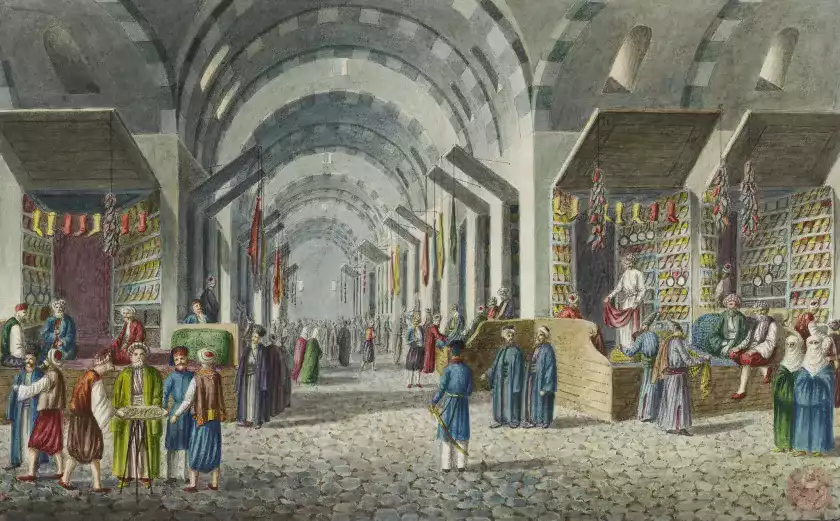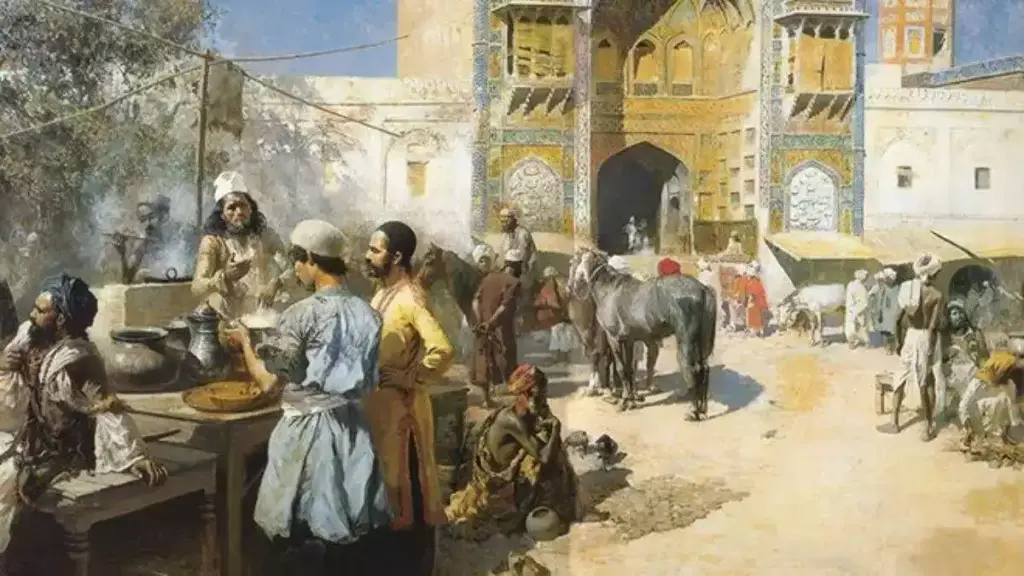The Ottoman Empire has been one of the important centers of trade throughout history. The Ottoman Empire’s trade venues, along with its vast lands and strategic location, have enabled the Ottoman Empire to have a rich and diverse economy in terms of trade. In this article, we will take a more detailed look at how trade was conducted in the Ottoman Empire, the variety of trade venues, and other aspects of trade.
The Importance of Trade in the Ottoman Empire
The Ottoman Empire, due to its geographical location, served as a bridge between the East and the West. Since the trade routes between Europe and Asia passed through Ottoman territory, the empire was at the center of trade. This increased the economic power of the Ottomans and contributed to the enrichment of the empire.
Trade Places in the Ottoman Empire
- Grand Bazaar : The Grand Bazaar in Istanbul comes to mind at the top of the list of trade venues in the Ottoman Empire. It is one of the most famous and historical trade centers of the Ottoman Empire. Built in the 15th century, this bazaar is a huge complex with thousands of shops. Gold, silver, textiles, leather goods, carpets, jewelry and many other products are sold in the Grand Bazaar, which has become the center of both trade and cultural interaction over time.
- Bedestens : Bedestens are covered markets where valuables and jewellery were sold during the Ottoman period. Located inside and outside the Grand Bazaar in Istanbul, bedestens are places where especially precious stones, gold and silver ornaments are bought and sold. Bedestens are important trade venues reflecting the wealth and magnificence of the Ottoman Empire.
- Caravanserais : Caravanserais, located in various parts of the Ottoman Empire, were places where caravans stayed and traded. These structures were generally built on road routes and at strategic points on trade routes. In addition to providing the necessary facilities for travelers to stay, caravanserais also contributed to the revival of trade. These structures were also important centers that provided cultural interaction and contributed to the development of trade.
- Ports and Trade Centers : The extensive sea coasts of the Ottoman Empire allowed the development of ports and the revival of trade. Port cities such as Izmir, Thessaloniki, and Trabzon became centers of both local and international trade. The trade carried out in these ports contributed significantly to the economic growth of the Ottoman Empire thanks to the trade venues. The ports also increased trade and cultural interaction between different cultures.
- Inns and Caravan Palaces : Inns and caravan palaces, which provided accommodation and storage areas for merchants doing business in the Ottoman Empire, were also important trade venues. These structures were built to facilitate trade and meet the needs of merchants. While inns were generally located in large trade centers, caravan palaces were used for the accommodation of caravans and the storage of goods.
Trade Routes Used in Ottoman Trade
The Ottoman Empire had a wide network of roads used in trade. These roads enabled the development of trade by both land and sea. Important trade routes such as the Silk Road contributed to the economic growth of the Ottoman Empire and the increase in cultural interaction. In addition, as trade venues in the Ottoman Empire, postal roads and caravan roads were built to facilitate trade between different regions.
Currencies Used in Ottoman Trade
The Ottoman Empire used various currencies in different periods. Currencies such as the Ottoman akçe, silver coins and gold lira were widely used in trade. Although different currencies were used in different regions of the Ottoman Empire, the Ottoman akçe was generally used in trade
It was used as the basic currency of the aret. The Ottoman akçe became an important symbol reflecting the economic power of the Ottoman Empire.

Professions and Merchants in Ottoman Trade
In the Ottoman Empire, trade was carried out through different professional groups and merchants. Merchants generally operated as family businesses and specialized in different areas of trade. During periods when trade was intense in Istanbul and other major cities, merchants constituted an important economic and social power. In addition, trade venues in the Ottoman Empire were also widely held among different ethnic groups, which increased the cultural diversity and interaction of trade.
Legal Regulations and Taxation in Ottoman Trade
In the Ottoman Empire, trade and trade venues were subject to various legal regulations. Various trade laws and regulations were created to regulate and supervise trade. In addition, taxation in trade was an important issue and the state levied various taxes and tributes to increase the income from trade. Tax systems had an important role in regulating trade and increasing state revenues.
The trade venues in the Ottoman Empire have gone down in history as important structures reflecting the economic power and wealth of the empire. Trade venues such as the Grand Bazaar, covered bazaars, caravanserais, ports and inns have become symbols reflecting the Ottoman success in trade and its cultural diversity. These venues have ensured that the economic and cultural heritage of the Ottoman Empire has survived to this day. When examined together with other aspects of trade, the importance and influence of the Ottomans in trade can be better understood.
